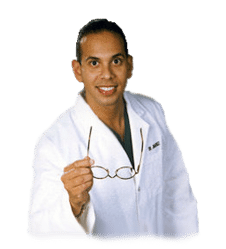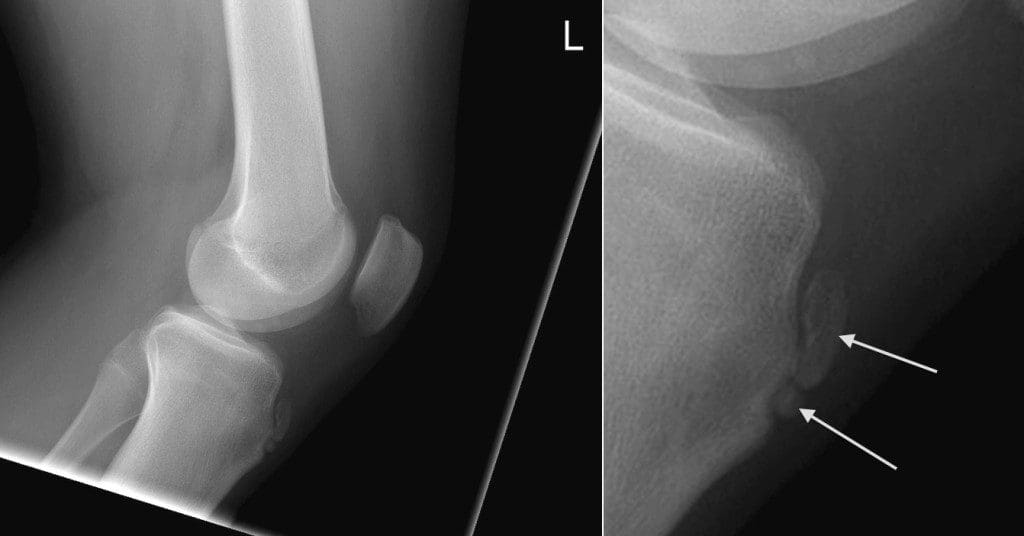Osgood-Schlatter disease is a common cause of knee pain in growing adolescents. It is characterized by the inflammation of the site below the knee where the tendon from the kneecap, or the patellar tendon, attaches to the shinbone, or tibia. Osgood-Schlatter disease occurs during growth spurts when muscles, bones, tendons, and other tissues shift rapidly.
Physical activities can place additional stress on the bones, muscles, tendons and other complex structures of young athletes. Children and adolescents who participate in running and jumping sports have a higher chance of developing this condition. However, less active children and adolescents may also experience this well-known health issue.
In the majority of instances, Osgood-Schlatter disease will resolve on its own and the pain can be managed with over-the-counter drugs and/or medications. Stretches and exercises can also help improve strength, flexibility and mobility. Alternative treatment options, such as chiropractic care, can also help relieve pain and restore the patient’s well-being.
Table of Contents
Osgood-Schlatter Disease Explained
The bones of children and adolescents have a special area where the bone grows, known as the growth plate. Growth plates are made up of cartilage, which harden into solid bone, when a child or adolescent is fully grown.
Some growth plates function as attachment sites for tendons, the strong soft tissues which connect muscles to bones. A bump, known as the tubercle, covers the growth plate at the end of the tibia. The set of muscles in the front of the thigh, or the quadriceps, then attaches to the tibial tubercle.
When a child or adolescent participates in physical activities, the quadriceps muscles pull the patellar tendon which then pulls the tibial tubercle. In some children and adolescents, this traction on the tubercle can cause pain and inflammation in the growth plate. The prominence, or bulge, of the tubercle may become pronounced as a result of this problem.
Osgood-Schlatter Disease Symptoms
Painful symptoms associated with Osgood-Schlatter disease are often brought on by running, jumping, and other sports-related pursuits. In some cases, both the knees have symptoms, although one knee might be worse. Common symptoms of Osgood-Schlatter disease also include:
- Knee pain and tenderness in the tibial tubercle
- Swelling in the tibial tubercle
- Tight muscles at the front or back of the thigh

Osgood-Schlatter disease is the inflammation of the bone, cartilage and/or tendon at the top of the shinbone, or tibia, where the tendon attaches to the kneecap, or patella. Osgood-Schlatter disease is considered to be an overuse injury rather than a disorder or condition. Osgood-Schlatter disease is one of the most common causes of knee pain in children and adolescents. Although it can be very painful, the health issue generally goes away on its own within 12 to 24 months.
Dr. Alex Jimenez D.C., C.C.S.T. Insight
Osgood-Schlatter Disease Diagnosis
Throughout the consultation, the healthcare professional will discuss the children or adolescent’s symptoms regarding their overall health and wellness. They will then conduct a comprehensive evaluation of the knee. This will consist of applying pressure to the tibial tubercle, which should be painful for a patient with Osgood-Schlatter disease. Additionally, the doctor may also ask the child or adolescent to walk, run, jump, or kneel to see whether symptoms are brought on by the movements. Furthermore, the healthcare professional may also order an x-ray of the patienet’s knee to help support their diagnosis or to rule out any other health issues.
Osgood-Schlatter Disease Treatment
Treatment for Osgood-Schlatter disease focuses on reducing pain and inflammation. This generally requires limiting physical activities until symptoms improve. Sometimes, rest may be necessary for many months, followed by treatment and rehabilitation program. However, participation may be safe to continue if the patient experiences no painful symptoms. The doctor may recommend additional treatment, including:
- Stretchex and exercises. Stretches and exercises for the front and back of the thigh, or the quadriceps and the hamstring muscles, can help alleviate pain and prevent the disease from returning.
- Non-steroidal anti-inflammatory drugs. Medications like ibuprofen and naproxen can also help reduce pain and inflammation.
Most symptoms will completely vanish when a child completes the adolescent growth spurt, around age 14 for girls and age 16 for boys. Because of this, surgery is often not recommended, although the prominence of the tubercle will remain. The scope of our information is limited to chiropractic and spinal health issues. To discuss the subject matter, please feel free to ask Dr. Jimenez or contact us at 915-850-0900 .
Curated by Dr. Alex Jimenez

Additional Topic Discussion: Relieving Knee Pain without Surgery
Knee pain is a well-known symptom which can occur due to a variety of knee injuries and/or conditions, including sports injuries. The knee is one of the most complex joints in the human body as it is made-up of the intersection of four bones, four ligaments, various tendons, two menisci, and cartilage. According to the American Academy of Family Physicians, the most common causes of knee pain include patellar subluxation, patellar tendinitis or jumper’s knee, and Osgood-Schlatter disease. Although knee pain is most likely to occur in people over 60 years old, knee pain can also occur in children and adolescents. Knee pain can be treated at home following the RICE methods, however, severe knee injuries may require immediate medical attention, including chiropractic care.

EXTRA EXTRA | IMPORTANT TOPIC: Recommended El Paso, TX Chiropractor
Post Disclaimer
Professional Scope of Practice *
The information on this blog site is not intended to replace a one-on-one relationship with a qualified healthcare professional or licensed physician and is not medical advice. We encourage you to make healthcare decisions based on your research and partnership with a qualified healthcare professional.
Blog Information & Scope Discussions
Welcome to El Paso's Premier Wellness and Injury Care Clinic & Wellness Blog, where Dr. Alex Jimenez, DC, FNP-C, a board-certified Family Practice Nurse Practitioner (FNP-BC) and Chiropractor (DC), presents insights on how our team is dedicated to holistic healing and personalized care. Our practice aligns with evidence-based treatment protocols inspired by integrative medicine principles, similar to those found on this site and our family practice-based chiromed.com site, focusing on restoring health naturally for patients of all ages.
Our areas of chiropractic practice include Wellness & Nutrition, Chronic Pain, Personal Injury, Auto Accident Care, Work Injuries, Back Injury, Low Back Pain, Neck Pain, Migraine Headaches, Sports Injuries, Severe Sciatica, Scoliosis, Complex Herniated Discs, Fibromyalgia, Chronic Pain, Complex Injuries, Stress Management, Functional Medicine Treatments, and in-scope care protocols.
Our information scope is limited to chiropractic, musculoskeletal, physical medicine, wellness, contributing etiological viscerosomatic disturbances within clinical presentations, associated somato-visceral reflex clinical dynamics, subluxation complexes, sensitive health issues, and functional medicine articles, topics, and discussions.
We provide and present clinical collaboration with specialists from various disciplines. Each specialist is governed by their professional scope of practice and their jurisdiction of licensure. We use functional health & wellness protocols to treat and support care for the injuries or disorders of the musculoskeletal system.
Our videos, posts, topics, subjects, and insights cover clinical matters and issues that relate to and directly or indirectly support our clinical scope of practice.*
Our office has made a reasonable effort to provide supportive citations and has identified relevant research studies that support our posts. We provide copies of supporting research studies available to regulatory boards and the public upon request.
We understand that we cover matters that require an additional explanation of how they may assist in a particular care plan or treatment protocol; therefore, to discuss the subject matter above further, please feel free to ask Dr. Alex Jimenez, DC, APRN, FNP-BC, or contact us at 915-850-0900.
We are here to help you and your family.
Blessings
Dr. Alex Jimenez DC, MSACP, APRN, FNP-BC*, CCST, IFMCP, CFMP, ATN
email: coach@elpasofunctionalmedicine.com
Licensed as a Doctor of Chiropractic (DC) in Texas & New Mexico*
Texas DC License # TX5807
New Mexico DC License # NM-DC2182
Licensed as a Registered Nurse (RN*) in Texas & Multistate
Texas RN License # 1191402
ANCC FNP-BC: Board Certified Nurse Practitioner*
Compact Status: Multi-State License: Authorized to Practice in 40 States*
Graduate with Honors: ICHS: MSN-FNP (Family Nurse Practitioner Program)
Degree Granted. Master's in Family Practice MSN Diploma (Cum Laude)
Dr. Alex Jimenez, DC, APRN, FNP-BC*, CFMP, IFMCP, ATN, CCST
My Digital Business Card


